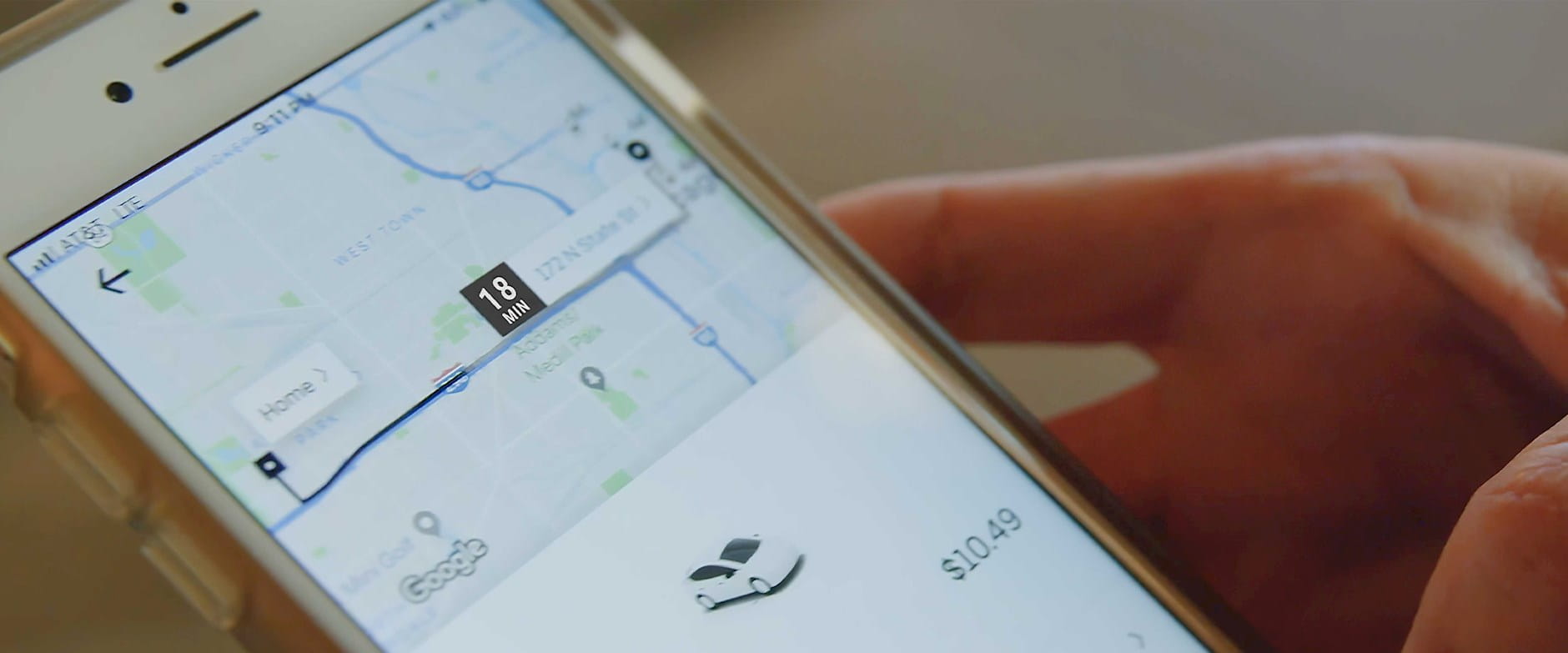Narrator: One thing that seems consistent in today’s culture is that no one wants to wait. Companies are consistently creating new ways to get you the products you want faster and cheaper than their competitors, although one thing that can never seem to come fast enough is your ride-share ride.
But research from Koç University’s Ehrun Özkan and Chicago Booth’s Amy Ward explores a new way Uber or Lyft can ensure you get your rides faster and more efficiently.
Amy R. Ward: For me, I’m impatient, and so if you offer me a driver and it’s gonna take the driver more than three or four minutes to get to me, I might cancel.
Narrator: So Ward and Özkan created an algorithm that would ensure drivers would reach customers as quickly as possible. Say we have four drivers. The drivers do not have passengers, so they’re just kind of hanging out and waiting for the passengers to come.
Amy R. Ward: We’ve got a passenger. The question we have to answer is: Which driver are we going to send to this passenger? One way to answer that question is to just look at it and see which driver is closest. And potentially, if we send a driver that’s too slow or the passenger has to wait too long, the customer’s gonna choose something else. This isn’t the only transportation option in the world.
Narrator: So we send him the closest driver.
Amy R. Ward: So then what happens? Well, there’s a concert that gets out and that causes a group of customers to need drivers. So we have this group of customers that need drivers. There’s three drivers, so we can match them all. For two of the customers, this is easy. The drivers are close. There’s no problem. For one of the customers, well it turns out that it’s a bit tough for that driver to get to this particular location. So it’s gonna be a rather large travel time, and this customer’s thinking, “You know, I’m not sure I wanna wait the 10 or 15 minutes.”
Narrator: That customer’s not willing to wait, so she cancels. Ward and Özkan’s algorithm would have chosen differently.
Amy R. Ward: That first match we made, that first customer, it sorta seems sensible to give him the closest driver, but what if we’d been a little bit smarter about it? We knew the concert was letting out. If we’d been a little bit smarter, we might’ve said, “You know, for that customer, there’s not that much difference between matching him with the closest driver and a driver that’s slightly farther away. So for that customer, I’m gonna change that match.”
Narrator: The first rider would’ve had to wait four minutes, instead of two. The riders getting out of the concert, well, they get matched up within minutes. That’s the trade-off the researchers’ algorithm would have made.
Amy R. Ward: We have information about demand patterns. We have information about when concerts are letting out and sports events are letting out. The question is: How do we make our matching decisions in order to incorporate that kind of information so we don’t end up in the situation that you just saw? We end up in a situation where the locations of the drivers are better matched to where the locations of the customers are. That’s what our research is about, optimizing the matching decisions such that the spatial locations of the drivers that you end up with are closer to where the customers are actually arriving.
